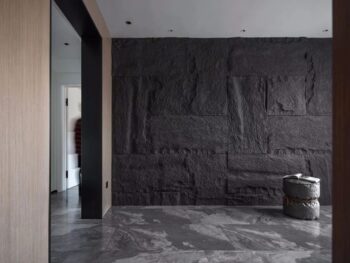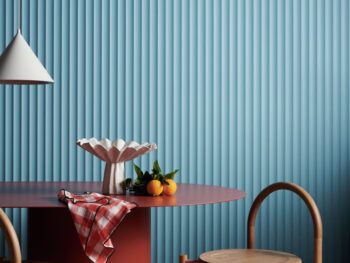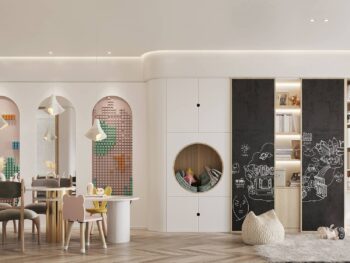
What Is the Difference Between Solid Wood Wall Panel and VJ Wall Panel?
In this article, we will compare solid wood siding and VJ siding to explore the differences in materials, appearance, durability, installation methods and decorative styles. This will help you better understand both siding materials so you can make informed decisions when choosing your finishing materials. Whether you are working on a home renovation or a commercial project, choosing the right siding material will have a profound impact on the final interior environment and appearance.
Related Articles
Choose Solid Wood Wall Panels or PVC Wall Panels?
Comparison of Solid Wood Wall Panel and WPC Wall Panel
Solid Wood vs MDF: Which Wall Panel Is Right for Your Home Decor?
MDF vs PVC Wall Panels: Comparison of the Differences
I. Introduction to solid wood wall panels
Solid wood wall panel is a wall panel material used for interior decoration. It is made of solid wood, usually cut, processed and made from pieces of wood. These woods are usually from different types of trees, such as pine, oak, birch, walnut, etc., and can be selected according to decorative needs and personal taste.
Solid wood wall panels have the advantages of natural beauty, durability, environmental protection and good decorative properties. However, it should be noted that solid wood wall panels also have some potential problems, including higher price, complicated installation, easy to get damp, deformation and discoloration, etc. Additionally, solid wood siding requires regular maintenance to maintain its beauty and performance.
Overall, solid wood wall panels are a high-quality, beautiful and environmentally friendly interior decoration material that brings natural warmth and style to a room. However, its features and suitability need to be carefully considered when selecting it to ensure it meets project needs.
II. What are the advantages and disadvantages of solid wood wall panels?
Advantages
Solid wood wall panels have many advantages that make them a popular choice for interior decoration. Here are some of the key benefits of solid wood siding:
1. Natural beauty
Solid wood siding is prized for its natural beauty. Each solid wood wall panel has a unique wood grain, color and texture, bringing a warm and natural atmosphere to the interior space.
2. High quality appearance
Solid wood wall panels provide a high-quality appearance and give interior spaces more texture and taste. They are suitable for traditional, classic and cozy decoration styles.
3. Durability
Properly maintained solid wood siding is very durable. They stand the test of time and resist scratches, scuffs and fatigue.
4. Repairability
If solid wood siding is scratched or damaged, it can usually be repaired by sanding and repainting it back to its original condition.
5. Environmentally friendly
Solid wood siding is often a sustainable choice because they use natural wood, helping to reduce the need for forest resources.
6. Hygroscopicity
Solid wood wall panels have certain hygroscopic properties, which can help regulate indoor humidity and increase comfort in dry environments.
7. Appreciation potential
Installing solid wood siding can increase the value of your home as they are considered a high-end and high-quality finishing option.
8. Customizability
Solid wood wall panels can be easily customized into a variety of shapes and designs to suit specific decorative needs.
9. Sound absorption performance
Solid wood wall panels have sound-absorbing properties to a certain extent, which can reduce indoor noise transmission and provide a quieter environment.
10. Enhance temperature stability
Solid wood wall panels are relatively insusceptible to moisture or temperature changes, and do not expand or contract easily.
Overall, solid wood wall panels stand out for their natural beauty, high-quality appearance, and durability, making them suitable for a variety of decorating projects and decorating styles. Whether in the living room, bedroom, dining room or other indoor areas, solid wood wall panels can enhance the texture and taste of the space.
Disadvantages
Although solid wood siding offers many advantages, there are also some disadvantages and limitations that need to be considered when choosing. Here are some of the main disadvantages of solid wood siding:
1. High cost
Solid wood siding generally costs more because they are made from natural wood, and different types of wood have different prices. This may make solid wood siding unsuitable for renovation projects with a limited budget.
2. Requires regular maintenance
Solid wood siding requires regular maintenance, including painting, cleaning and maintenance, to maintain its appearance and durability. If not properly maintained, wood can become dull or damaged.
3. Affected by the environment
Solid wood siding is very sensitive to environmental conditions. Moist conditions can cause wood to swell, warp, or develop mold. Therefore, it is not suitable to use solid wood wall panels in wet areas such as bathrooms or kitchens.
4. Vulnerable to physical damage
Although solid wood siding is relatively strong, it is still susceptible to physical damage such as scratches, dents, and impacts. This may require additional repairs and maintenance.
5. Limited customizability
Solid wood wall panel designs are limited by the limitations of natural wood, so highly customized designs may not be possible in some cases.
6. Sustainability issues
The use of solid wood wall panels can raise sustainability issues because they rely on limited forest resources. Ensuring that you choose a wood supplier that comes from sustainably managed sources can mitigate this problem.
7. Discoloration problem
Solid wood siding may change color over time, depending on the wood species and degree of exposure to sunlight. This can lead to an uneven appearance.
8. Installation requirements
Installing solid wood siding can require more skill and time, especially when working with different wood textures and joints.
While solid wood siding offers unique beauty and durability, these advantages and disadvantages need to be weighed when selecting to ensure they are suitable for the specific renovation project and environmental conditions.
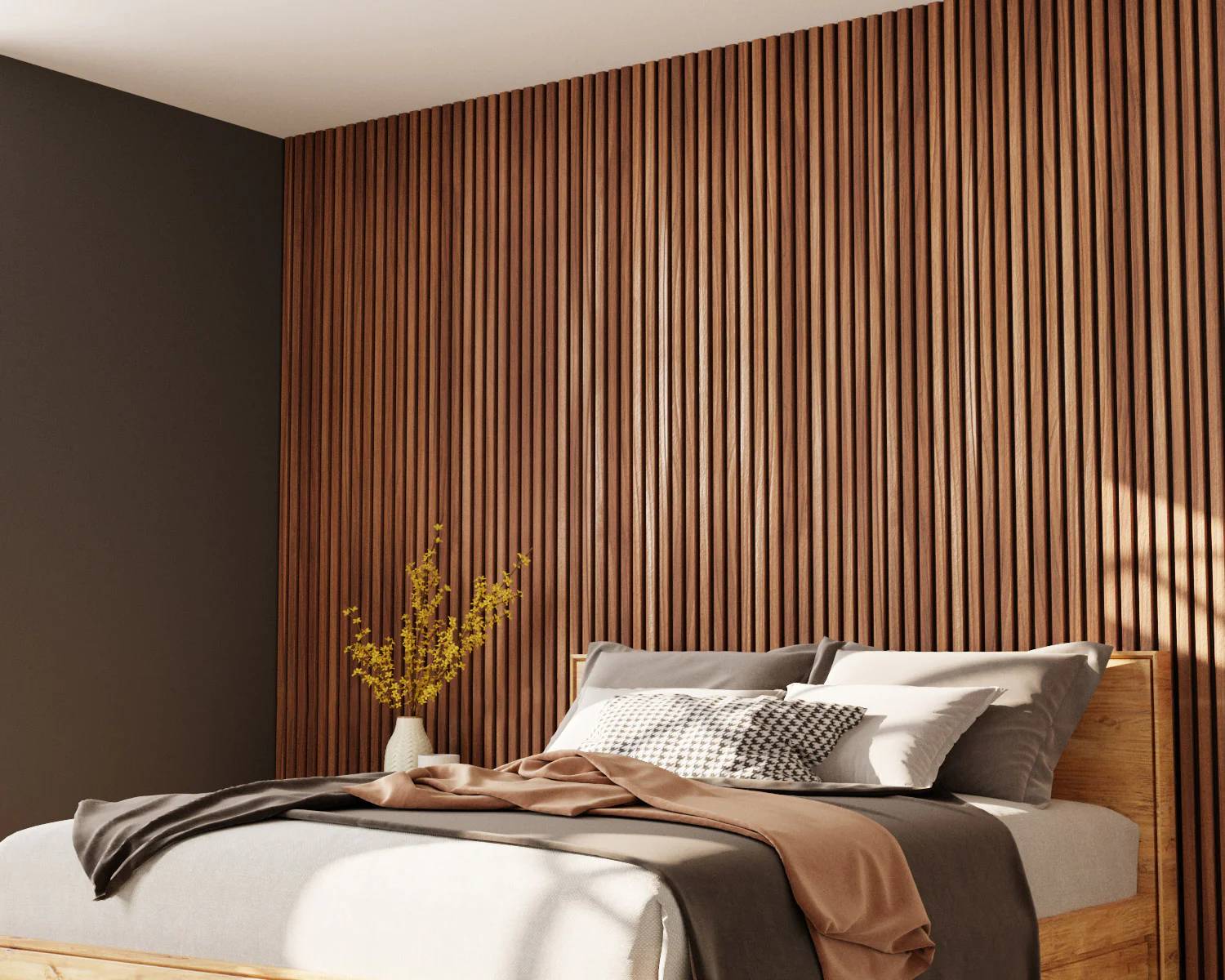
III. What is a VJ board?
VJ Board is a wooden board used for interior decoration and is often used for wall covering and decoration. VJ is the abbreviation of “Vertical Joint”, which refers to the use of vertical joints when installing wooden panels.
VJ boards are usually made of solid or synthetic wood, with a smooth surface and vertical stripes. They can be used to cover walls, ceilings, columns, etc. to increase the visual appeal and decoration of a space. The installation method of VJ boards is usually to connect the boards vertically to form an overall surface, thus showing longitudinal lines and textures.
VJ panels are widely used in interior decoration, especially in those pursuing traditional, rural style or designs with a classical atmosphere. This kind of board can create a variety of decorative effects by selecting different woods, colors and finishes, from simple to complex, from modern to classic, all can be achieved with VJ boards.
In addition to traditional textures and colors, modern VJ boards also feature innovations in design. Designers and manufacturers began to experiment with different cutting, engraving and embossing techniques to create more diverse and unique VJ board effects. This enables VJ panels to adapt to a wider range of interior design styles and meet the needs of different customers.
In general, VJ board is a decorative material full of traditional charm and natural beauty. Through the design of vertical connections, it creates a coherent and unique texture effect. Whether in a classic home or in a modern interior design, VJ panels add warmth and unique visual appeal to a space.
IV. What are the advantages and disadvantages of VJ boards?
As a decorative material, VJ board has its own advantages and disadvantages. Here is a detailed introduction to the advantages and disadvantages of VJ boards:
Advantages
1. Natural beauty
VJ boards are usually made of solid wood, retaining the natural grain, color and texture of the wood, giving the indoor space a natural and warm aesthetic.
2. Traditional charm
The design of VJ panels is inspired by traditional architectural styles. The vertically connected textures echo the columns and textures in traditional buildings, bringing a traditional charm to the indoor space.
3. Visual effects
The design of vertical connections gives the wall a coherent texture, emphasizing the sense of verticality and enhancing the layering and height of the space.
4. Various styles
Although VJ board is derived from traditional style, it can also be combined with modern elements to create a variety of styles, from classic to modern, which can be fully displayed.
5. Adapt to different spaces
VJ panels are suitable for various indoor scenes, including living rooms, bedrooms, dining rooms, corridors, etc., adding unique decorative effects to different spaces.
Disadvantages
1. Maintenance requirements
Since VJ board is usually made of solid wood, it can be affected in environments with large changes in humidity and require more maintenance and attention to prevent deformation and cracking.
2. Complex to make
The production of VJ boards involves the design of vertical connections and requires experienced professionals. Therefore, the production process may be complicated and requires a high level of craftsmanship.
3. Higher cost
Because VJ boards are usually made of solid wood and have a complicated manufacturing process, their cost is relatively high and may not be suitable for projects with limited budgets.
4. Style restrictions
Although VJ panels can be combined with modern elements, their traditional vertical connection design may not be suitable for all interior design styles, especially some modern, minimalist styles. There may not be as much customizability in terms of color and texture as solid wood siding.
5. Not suitable for humid environments
VJ boards are usually made from MDF (medium density fiberboard) or other synthetic materials, which are sensitive to moisture and humidity changes. Therefore, VJ boards are not suitable for use in wet areas such as bathrooms, toilets or kitchens that require a high degree of waterproofing, as they are prone to moisture, swelling and deformation.
6. Does not have the texture of real wood
Although VJ boards are designed to mimic the look of traditional wood boards, they often lack the texture and grain of real wood. This may not be suitable for those looking for an authentic wood feel.
7. Need to paint
VJ boards usually require painting to protect the surface and enhance durability. This may require some additional time and cost, as well as regular maintenance to maintain the integrity of the coating.
8. Destructibility
The surface of VJ boards is usually fragile and easily damaged by impacts or scratches. Especially in high-traffic areas such as hallways or entrances, VJ panels may require more frequent maintenance and repairs.
All things considered, VJ board has become a favorite decoration choice for many people with its natural beauty, traditional charm and diverse style adaptability. However, it should be noted that factors such as maintenance, fabrication difficulty, and cost need to be taken into consideration when selecting a VJ board to ensure that it matches the design needs and budget.
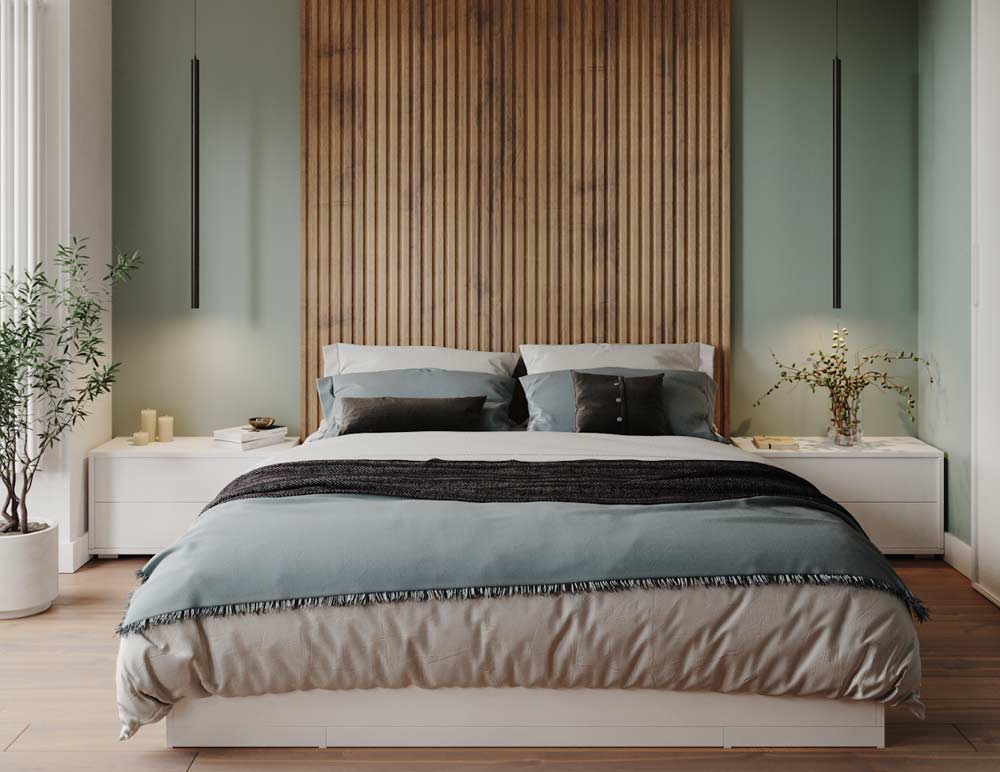
V. Comparison of the differences between solid wood wall panels and VJ wall panels
Solid wood wall panels and VJ (V-Joint) wall panels are two different types of wall panel materials. They have some differences in materials, appearance, installation methods and uses. Here’s how they compare:
Items |
Solid Wood Wall Panel |
VJ Wall Panel |
Material |
Solid wood siding is made from natural wood, usually solid wood planks from a variety of tree species. Each solid wood wall panel has a unique wood grain and color, thus providing a natural beauty. Solid wood wall panels can be solid planks or multi-layered structures. | VJ wall panels are usually made from synthetic materials such as MDF (medium density fiberboard) or PVC. Their surfaces are designed with V-joints to mimic the look of traditional wood planks. VJ siding is usually flat and does not have the real wood texture of solid wood siding. |
Exterior |
Solid wood wall panels provide an authentic wood feel and each panel is unique. They are suitable for traditional, classical and warm decoration styles and have a natural beauty. | VJ siding is designed to mimic the look of traditional wood planks, but often lacks the texture of real wood. They work well for some vintage or traditional style renovation projects, but may not have the same authentic look as solid wood siding. |
Installation |
Installing solid wood siding often requires more skill and time, especially when working with different wood grains and joints. They usually need to be fixed to the wall with nails or screws. | VJ wall panels are generally lightweight and easy to handle and install. They can be joined by tongue and groove or cut and machined using ordinary woodworking tools, and installation is relatively simple. |
Application |
Solid wood wall panels are suitable for decorative projects that require a real wood feel, such as living rooms, dining rooms, bedrooms, etc. They are not suitable for humid environments. | VJ wall panels are commonly used in areas where waterproofing is required, such as kitchens, bathrooms and laundry rooms, as they can be made from waterproof synthetic materials. They are also suitable for areas where the look of traditional wood planks needs to be mimicked. |
Price |
Due to the use of natural wood, solid wood siding is generally more expensive, depending on the type and quality of wood chosen. | VJ wall panels are usually relatively low priced because they use synthetic materials, which makes them economical. |
VI. What styles are suitable for solid wood wall panels and VJ wall panels?
Solid wood wall panels
Solid wood wall panels are suitable for many interior decoration styles, but they are particularly suitable for the following styles:
1. Traditional style
Solid wood wall panels are ideal for traditional decorating styles. Their natural wood grain and warm texture blend perfectly with traditional home decor. In traditional style living rooms, dining rooms and bedrooms, solid wood wall panels can add a classic and elegant atmosphere.
2. Country style
If you are in love with country, rural or French country style decor, solid wood wall panels are an essential element. They add a natural and welcoming feel to the room, complementing wooden furniture and flooring.
3. Beachfront or Coastal Style
Solid wood siding also works well in beachfront or coastal decor. They are combined with blue, white and marine elements to create a relaxing, pleasant seaside atmosphere.
4. Classical style
Solid wood wall panels are suitable for decorative projects in classical styles, such as classical European, Victorian or classical American. They can be used to decorate walls, ceilings and fireplace surrounds, adding sophistication and texture to the decor.
5. Warm and traditional home style
Solid wood siding is perfect for warm, cozy and traditional home styles. They can create a welcoming atmosphere in living rooms, family rooms and bedrooms, making people feel welcome.
It’s important to note that the look and feel of solid wood siding can vary depending on the type and color of the wood. Therefore, you can choose from different types of solid wood wall panels based on your specific style and decorative needs to suit your personal taste. No matter which one you choose, solid wood wall panels can add a natural beauty and warmth to interior spaces.
VJ wall panel
VJ (V-Joint) wall panels are suitable for a variety of interior decoration styles, especially the following styles:
1. Traditional style
VJ wall panels are ideal for traditional home decorating styles, especially those projects that emphasize classic and classical elements. VJ siding is designed to mimic the look of traditional wood panels, so it will look great in traditional styles.
2. Retro style
VJ wall panels are the ideal choice if you are looking for a retro, retro or retro style in your interior decoration. They can echo with other retro elements, such as retro furniture and accessories, to create a unique retro atmosphere.
3. Country or rural style
VJ wall panels match perfectly with rustic or rural style décor. They add warmth and intimacy to a room, complementing wooden furniture and flooring.
4. French country or French style
Similar to country style, VJ wall panels are also suitable for French country or French style decorating projects. They can bring a relaxed, cozy French country feel to a room.
5. Coastal or seaside style
VJ wall panels complement coastal or seaside decor styles. They are combined with blue, white and marine elements to create a relaxed, fresh coastal vibe.
6. Classical style
VJ wall panels are also suitable for decorative projects in classical styles, such as Classical European, Victorian or Classical American. They can be used to decorate walls, ceilings and fireplace surrounds, adding sophistication and texture to the decor.
7. Cool and modern style
Although VJ wall panels are usually associated with traditional styles, they can also be used as decorative elements in certain modern decorating projects to create a contrasting effect. In this case, VJ wall panels can be combined with modern furniture and decor to create a unique decorative style.
Overall, VJ wall panels are very flexible and can adapt to a variety of decorating styles. They provide an affordable way to add a decorative touch to a room and work well in many different types of projects.
VII. Conclusion
When comparing solid wood wall panels and VJ (V-Joint) wall panels, we can draw the following conclusions:
Solid wood wall panels provide authentic wood texture and unique beauty, suitable for traditional, classical, country and warm style decoration projects. They are aesthetically unique, but require more maintenance, are less tolerant of moisture, and are generally more expensive.
VJ wall panels are an affordable option for traditional, vintage, rustic and classic style renovation projects. They are designed to mimic the look of traditional wood planks, providing a similar visual effect but often lacking the texture of real wood. VJ wall panels are more practical in terms of waterproofing and maintenance and are suitable for some specific areas.
The final choice will depend on your renovation needs, budget and personal preferences. If you’re looking for the feel of real wood and are willing to do the extra maintenance, solid wood siding may be a more suitable choice. And if you are looking for affordability, waterproofness and decorative effects, VJ wall panels may better suit your needs. No matter which siding you choose, you need to make sure you choose a high-quality product and install it correctly to ensure your renovation project is a success.
Whether you choose solid wood wall panels or VJ wall panels, you can add unique decorative elements to the indoor space according to your decoration style and needs, creating a satisfying home environment.
Quick Quotation

